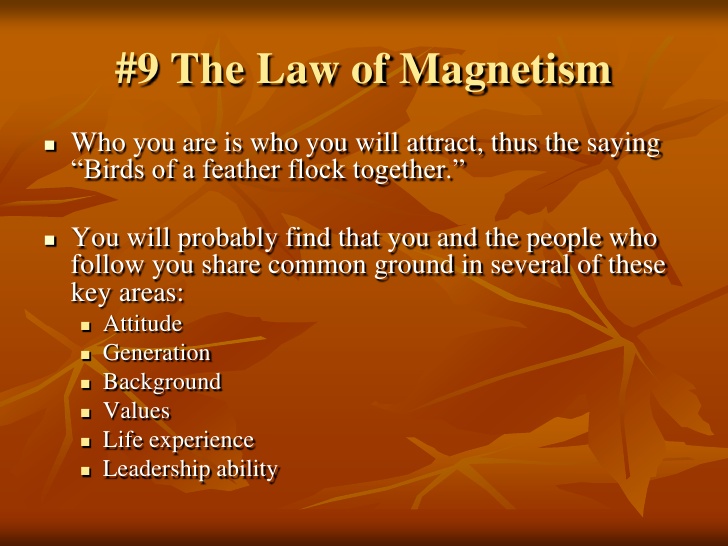Click here to return to Blog Post Intro
Elijah & The Law of Magnetism
What enabled Elijah to draw like-minded people to his side? It’s the Law of Magnetism: who you are is who you attract.
1. Every Leader has a Measure of Magnetism
All leaders attract others. Highly charismatic leaders often attract large numbers of followers, but even modest leaders gain a following. Otherwise, they wouldn’t be called leaders, would they?
2. A Leader’s Magnetism may impact others intellectually, emotionally, or volitionally
Not all leaders impact others the same way, nor do they use the same means of influence. Like Elijah, the greatest leaders connect on multiple levels:
- With followers’ minds—when Elijah defeated the prophets of Baal, he connected with the people first by calling down fire from heaven, confirming the reality of God.
- With followers’ hearts—to give his message more emotional impact, Elijah drenched his sacrifice in gallons of water.
- With followers’ wills—when Elijah cried, “Seize the prophets of Baal!” (2 Kings 18:40), the people obeyed.
3. Magnetism is neither good nor bad in itself—it depends what a leader does with it
Charismatic leaders come in all shapes and sizes. There are Adolf Hitlers, Mother Teresas, and Elijahs. Magnetism is like money; it’s a useful tool, neither good nor bad in itself. Elijah used his ability to attract like-minded people in order to fulfill his mission and extend his influence.
4. Secure Leaders Draw both Similar & Complementary Followers
All leaders tend to attract people similar to themselves in values, age, and attitude. Elijah’s leadership attracted people who loved God and who were gifted in prophecy. Secure leaders—ones who acknowledge and accept their weaknesses as well as their strengths—also attract people with complementary abilities.
5. A Leader’s Magnetism Never Remains Static
A leader can cultivate, shape, and mature his magnetism. Before Elijah drew crowds, he labored in obscurity, helping a widow and her son. God provided him time to cultivate a vision for his life, to make his purpose clear, and to give him confidence. All those things increased his level of magnetism.
Elijah & Elisha – Cut from the Same Cloth (2 Kings 2:1-15)
On a followership-leadership continuum, attraction is more than chemistry. At least four elements combine to attract followers to leaders:
1. Mutual Vision
Followers don’t naturally line up with a leader whose vision they don’t respect. Both Elijah and Elisha possessed a vision to serve God for the sake of Israel. When Elisha had the opportunity to share Elijah’s work, he turned from his old life of farming and adopted Elijah’s vision of leadership.
2. Mutual Expectations
Both Elijah and Elisha expected to do great things for God. Elisha expected and received a double portion of the anointing on Elijah.
3. Mutual Contribution
Elijah led and mentored Elisha, giving him the opportunity to learn how to be a godly leader. Elisha needed to humble himself, follow the older prophet, and learn. The arrangement made both of them better leaders.
4. Mutual Commitment
As Elijah neared the end of his leadership, Elisha renewed his commitment to his mentor. Three times when Elijah offered to release his protégé, Elisha responded, “As the Lord lives, and as your soul lives, I will not leave you!” (2 Kings 2:2, 4, 6). Elijah’s commitment to Elisha had grown equally strong, culminating in his offer to do whatever he could for his servant—including the blessing of a double portion of his spirit.
What about you? You can discover a lot about your leadership by looking at the people your leadership has been attracting. If you aren’t getting the kind or number of followers you’d like, you can grow and change as a leader…so you ultimately do attract more or different followers. Remember, who you are is who you attract!


